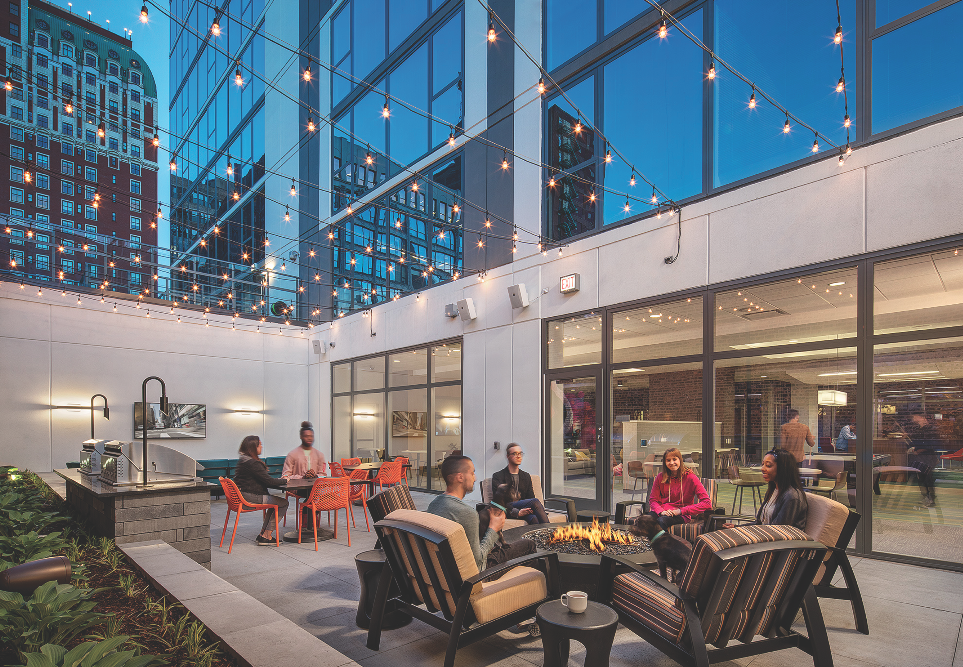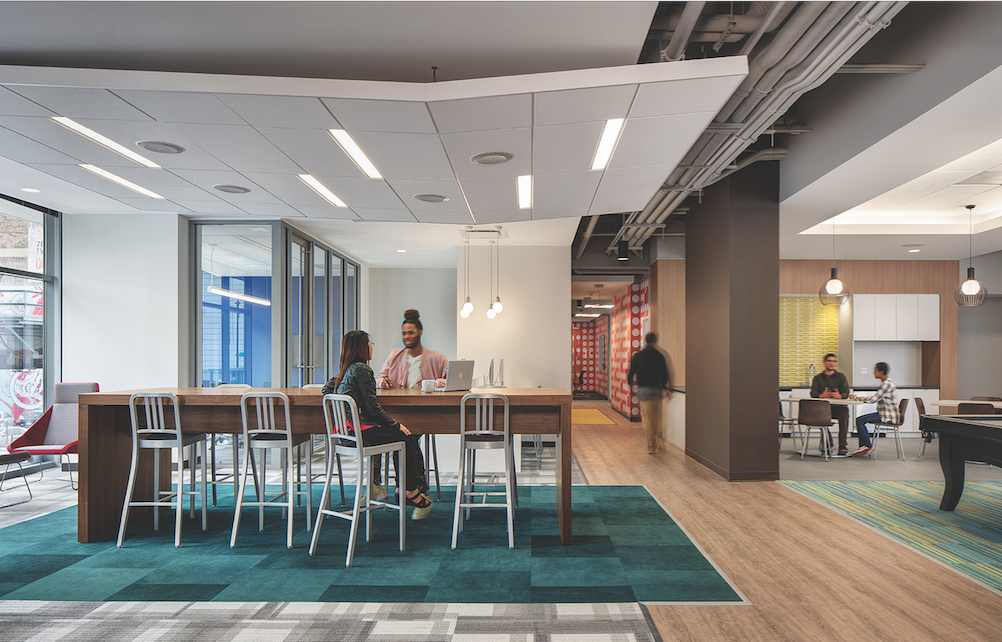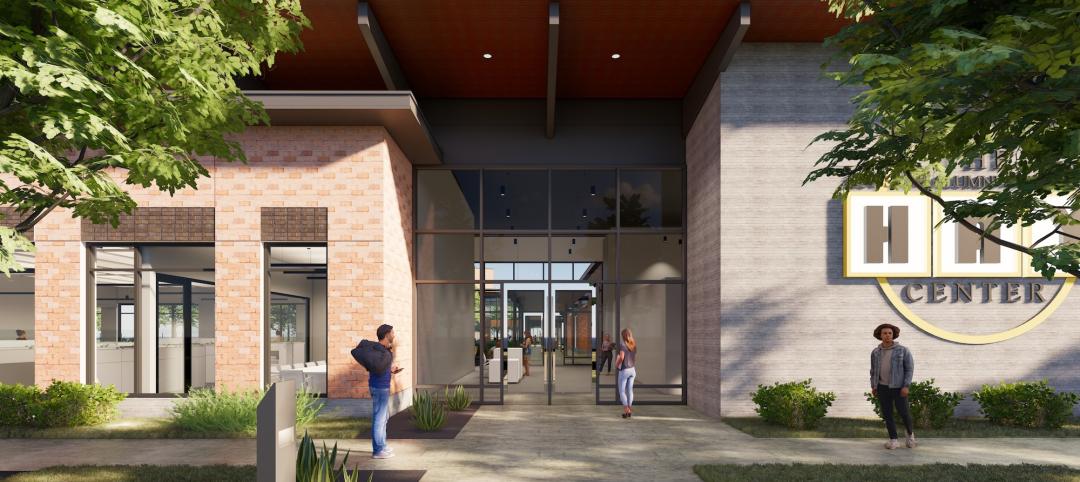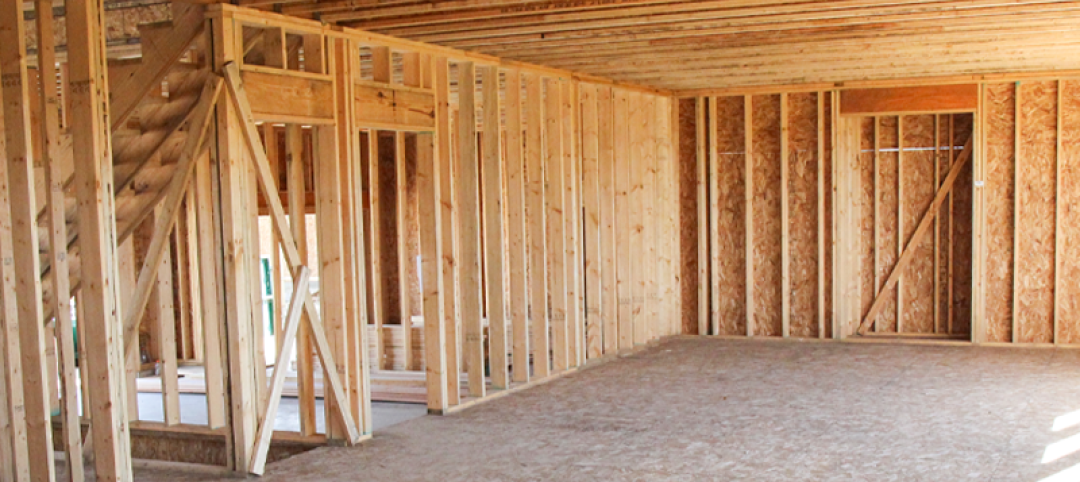An aging, diversifying U.S. population is prompting developers to shift their multifamily expansion plans to accommodate changing lifestyle preferences.
“As Millennials mature, they’re looking to invest in homes for themselves or have families,” says Daun St. Amand, AIA, LEED AP BD+C, Senior Vice President and Global Residential Sector Leader at CallisonRTKL. “In many cases, they’re moving back to the suburbs to find larger, more affordable space.”
But relocating from the city may mean a longer commute and loss of access to cultural facilities and nightlife. “The trend now is to identify suburban locations where we can design mixed-use projects that offer a bit of urbanism, including transit-oriented development and socialization opportunities,” says St. Amand.
See also: Top 150 Multifamily Architecture + AE Firms - 2018 Giants 300 rankings
See also: Top 70 Multifamily Engineering + EA Firms - 2018 Giants 300 rankings
See also: Top 70 Multifamily Construction + CM Firms - 2018 Giants 300 rankings
Sponsored by ZIP System sheathing and tape
At the same time, a growing cohort of Baby Boomers and other empty nesters are opting to downsize and relocate from suburban to urban environments, often choosing to rent instead of buy.
The National Multifamily Housing Council projects these demographic shifts will create demand for 4.6 million new apartment units by 2030.
There’s also growing demand for more affordable urban living options that will appeal to younger clientele.
Consider the 35-story Perla on Broadway condo tower under construction in downtown Los Angeles's historic theater district—the first residential high-rise built in the historic core in more than a century. Its modestly sized units and reasonable price points are intended to appeal to first-time homebuyers. It emphasizes pedestrian-oriented activities and outdoor amenity spaces such as a pool, dog walk, and active rooftop garden.
“There was a lot of thinking about each of the outdoor spaces—noise levels, socialization opportunities, and especially the ability to get away to a quiet space and decompress,” says St. Amand.
Cash-strapped Millennials looking to save on rent have a growing selection of co-living alternatives that offer tenants serviced rooms in shared apartments with communal lounges, kitchens, and bathrooms. In Chicago’s South Loop, the 30 East apartment community features 255 beds within 134 economically sized residential units.
“We are working on more projects that are incorporating the concept of renting by the bed, rather than by the unit,” says Clara Wineberg, AIA, LEED AP, Principal, Solomon Cordwell Buenz. “This building type is at an interesting intersection between student housing and urban multifamily residential projects.”
At the other end of the affordability spectrum are luxury condo towers such as the 62-story One Thousand Museum project under construction in Miami. Designed by the late Zaha Hadid, the building’s undulating exoskeleton is composed of 5,000 pieces of lightweight glass-fiber reinforced concrete imported from Dubai.
“The use of GFRC as a permanent formwork system is a first in high-rise construction, and it increases efficiency throughout the process,” says Brad Meltzer, President of Plaza Construction. This unusual construction method consists of lightweight, hollow panels that come together to form a structure core-filled with concrete and steel.

The terrace lounge at 30 East. Photo © Darris Lee Harris
“It allows the construction team to space the building’s columns up to 40 feet apart, embracing the concept of the free plan and giving residences and communal areas an open look and feel,” says Meltzer.
Lendlease reports a growing demand for complex multifamily designs that feature sloping walls, high slab heights, and large floor-to-ceiling views.
In New York City’s Tribeca neighborhood, the newly opened 56 Leonard Street condominium development features atypical floor plates, cantilevered floors, and irregular balcony spacing. Each of the building’s 146 condo units is equipped with its own private outdoor space, but the unusual layout of each floor created significant logistical challenges for the construction team.
“We had to bring a unique strategy to the project and reposition all of our equipment on each floor when pouring the concrete,” says Jeff Arfsten, Managing Director and Chief Operating Officer with Lendlease Americas. “Through these innovative designs, developers are able to provide residents with superior and unique living experiences to meet their evolving needs.”
GROWING—and changing—IN PLACE
Tenants are looking for flexible living spaces and the ability to personalize their home environment. NMHC's 2018 Consumer Housing Insights Survey found that 83% of respondents believed it’s important to have a space that evolves through different stages of their lives; 78% said it’s important to have a space that can change to meet changing needs.
“We’re starting to design residential units differently than we have in the past, because we want to aid that ability to personalize the space and use it differently as time goes on,” says St. Amand.
These units might integrate side-by-side living spaces with a sliding wall that can be reconfigured into an open environment, or “plus one” space that can be converted into a temporary bedroom or workroom.
There’s also a move toward encouraging socialization among tenants via active lobbies, expanded food and beverage offerings, and numerous activity spaces.
“If you have friends in the building, you’re more likely to renew your lease, and renewing leases is a major part of making pro formas work,” says St. Amand.
Some of today’s most popular amenities emphasize convenience, such as built-in vestibules or valet closets to accommodate package deliveries right at the unit rather than in centralized lockers near the lobby.
“Another trend we’re seeing is the use of smart appliances, locks, and outlets that can be controlled remotely,” says Lendlease's Arfsten. “In prior years, you would see this technology only used in condominiums, but now it’s increasingly used throughout rental properties.”
Architects and engineers are also starting to incorporate drone landing pads and security in preparation for the use of drones for transporting not only packages, but even people.
“Given that drone transportation is not yet fully developed or legally approved, it poses an opportunity for us to solve this anticipated innovation for the industry,” says Mark Humphreys, CEO, Humphreys & Partners Architects.
Related Stories
Affordable Housing | Jul 27, 2023
Houston to soon have 50 new residential units for youth leaving foster care
Houston will soon have 50 new residential units for youth leaving the foster care system and entering adulthood. The Houston Alumni and Youth (HAY) Center has broken ground on its 59,000-sf campus, with completion expected by July 2024. The HAY Center is a nonprofit program of Harris County Resources for Children and Adults and for foster youth ages 14-25 transitioning to adulthood in the Houston community.
Adaptive Reuse | Jul 27, 2023
Number of U.S. adaptive reuse projects jumps to 122,000 from 77,000
The number of adaptive reuse projects in the pipeline grew to a record 122,000 in 2023 from 77,000 registered last year, according to RentCafe’s annual Adaptive Reuse Report. Of the 122,000 apartments currently undergoing conversion, 45,000 are the result of office repurposing, representing 37% of the total, followed by hotels (23% of future projects).
Multifamily Housing | Jul 25, 2023
San Francisco seeks proposals for adaptive reuse of underutilized downtown office buildings
The City of San Francisco released a Request For Interest to identify office building conversions that city officials could help expedite with zoning changes, regulatory measures, and financial incentives.
Sponsored | Multifamily Housing | Jul 20, 2023
Fire-Rated Systems in Light-Frame Wood Construction
Find guidance on designing and building some of the most cost-effective, code-compliant fire-rated construction systems.
Multifamily Housing | Jul 13, 2023
Walkable neighborhoods encourage stronger sense of community
Adults who live in walkable neighborhoods are more likely to interact with their neighbors and have a stronger sense of community than people who live in car-dependent communities, according to a report by the Herbert Wertheim School of Public Health and Human Longevity Science at University of California San Diego.
Affordable Housing | Jul 12, 2023
Navigating homelessness with modular building solutions
San Francisco-based architect Chuck Bloszies, FAIA, SE, LEED AP, discusses his firm's designs for Navigation Centers, temporary housing for the homeless in northern California.
Sponsored | Fire and Life Safety | Jul 12, 2023
Fire safety considerations for cantilevered buildings [AIA course]
Bold cantilevered designs are prevalent today, as developers and architects strive to maximize space, views, and natural light in buildings. Cantilevered structures, however, present a host of challenges for building teams, according to José R. Rivera, PE, Associate Principal and Director of Plumbing and Fire Protection with Lilker.
Mass Timber | Jul 11, 2023
5 solutions to acoustic issues in mass timber buildings
For all its advantages, mass timber also has a less-heralded quality: its acoustic challenges. Exposed wood ceilings and floors have led to issues with excessive noise. Mass timber experts offer practical solutions to the top five acoustic issues in mass timber buildings.
Multifamily Housing | Jul 11, 2023
Converting downtown office into multifamily residential: Let’s stop and think about this
Is the office-to-residential conversion really what’s best for our downtowns from a cultural, urban, economic perspective? Or is this silver bullet really a poison pill?

















